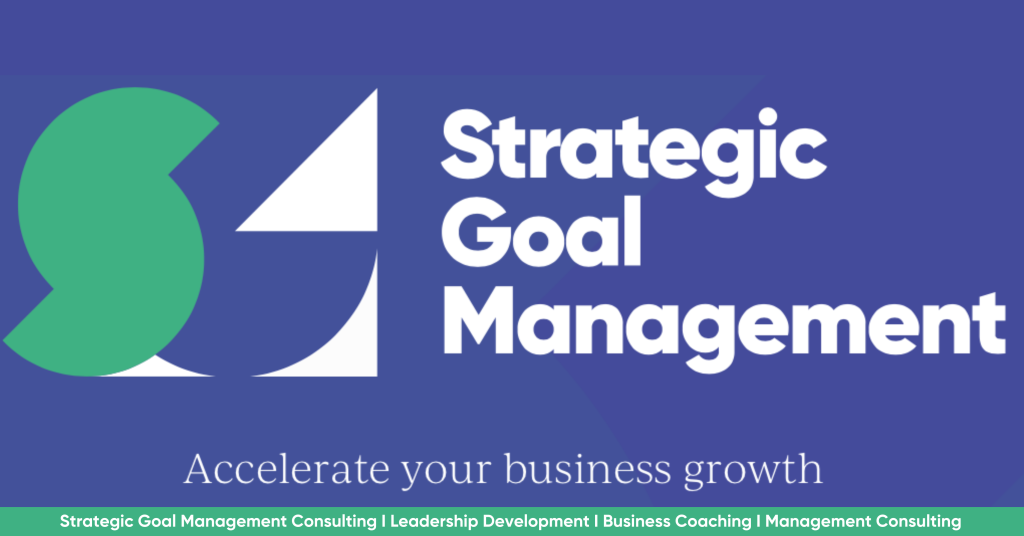Change Management: The Fundamentals
Change management is necessary because organisational change is constantly necessary to keep up with technological advancements, customer and employee needs, and other factors in the business macro environment, for example, integrating a new customer relationship management system (CRM). This example of a CRM changeover for digital transformation could be a challenging change management project or programme.

What is Change Management?

Change management can be defined as a methodology used to manage change in a measured and controlled way to achieve business objectives. Another way of articulating change management is the process or journey that takes a business from state A to state B.
An example of this can be seen in the vehicle motor industry, where giant corporations are nearly all changing to electric vehicles. External factors in the macro environment have primarily driven this change. Governments all over the world are trying to reduce their carbon footprints and are seeking cleaner energy sources.

Change management as a profession has its merits due to the inherent risks involved with large-scale change projects and the impact they can have on the organisation.
I have seen change management go exceptionally well, and I have seen change (not managed) go wrong. The latter example was the impetus I had to study for my change management diploma and strategic change management at the degree level.
Why is Change Management Important?
According to the Harvard Business Review, 70% of all change initiatives fail. If you have a change project critical to your business, consider assistance from a change management expert, such as Strategic Goal Management, because we have the necessary expertise.
Managing change effectively is a skill that can seriously benefit businesses. When managing change, practitioners use change management models and methodology to control the process. This application reduces risk, increases buy-in from stakeholders and makes the change initiative more likely to succeed.
Most people dislike change; some individuals experience loss when old ways are changed. A useful model to help you manage people through a change process is called Kubler-Ross’ Change Transition Curve.
How to Manage Change Effectively

There are several things to consider when undertaking a business change initiative. This section will cover some of the essential elements of change management that can be used as a quick guide.
However, before embarking on your change, ask yourself how this change will benefit the organisation’s mission, values, and strategic goals.
Gain leadership commitment to the change and identify the individual(s) that will be responsible. Ideally, this individual or persons will have the requisite skills, knowledge, and experience, or you will be off to a bad start. Sometimes the change leader is called the change champion in change management methodology.
The goals and scope of the change must be clearly understood. People will want to know why the change is happening.
Identify the key stakeholders that can influence or may be affected by the change. Conduct a stakeholder analysis; this process should inform you who the stakeholders are and their wants and needs. Failure to do this will result in a low level of commitment from the people if they are not consulted about the plan. Note the people that are change resistant and work on influencing them.
Write a stakeholder communications plan; the plan should include how you will communicate with the stakeholders, how often, and by what means. Proactive stakeholder management and effective communication will be critical to the success of the change implementation.
You must evaluate and control the project risks. A change management risk register identifies and provides mitigation of all hazards that may stop the project from succeeding. Consult your stakeholders so the risks can be identified and managed by the most appropriate person.
Track progress periodically and raise it to an appropriate level if the planned deadlines or milestones are in danger of being delayed.
Celebrate small wins with the people involved and communicate the success to relevant stakeholders. The aim is to create a buzz of excitement about the change to draw people in so they support the initiative.
Link the change project goals to staff and department objectives. This gambit is highly recommended for a long-term change initiative because it emphasises the importance of achieving the change goal.
Identify the lessons learned during the process to begin the following change process with more knowledge. An essential part of the post-project review should be to commend star performers and to thank all the people who made the change happen.
What are Change Management Consultants?

Change management consultants specialise in helping organisations navigate and implement change. They are experts in change management theory, methodologies, and best practices and work with organisations to develop and execute change strategies tailored to their specific needs and objectives.
Change management consultants typically have a broad range of skills and experience, including project management, communication, stakeholder engagement, training and development, and data analysis. They may specialise in specific industries, sectors, or types of change, such as digital transformation, mergers and acquisitions, or process improvement. They may work independently or as part of a consulting firm.
Change Management Consultant Services
Change management consultants’ services can vary depending on the organisation’s needs. Some standard services include:
- Conducting assessments of the organisation’s readiness for change, identifying potential barriers, and developing strategies to overcome them.
- Developing change management plans that include timelines, milestones, and metrics for measuring success.
- Facilitating workshops and meetings to engage stakeholders, build buy-in, and address concerns or questions.
- Training and coaching employees and managers on change management best practices and techniques.
- Developing communication plans and materials to keep stakeholders informed and engaged throughout the change process.
- Conducting evaluations and assessments to measure the effectiveness of change management initiatives and identify areas for improvement.
In addition to providing these services, change management consultants bring a fresh perspective and objective insights to the organisation. They can help leaders and stakeholders see the big picture, identify blind spots or biases, and develop innovative solutions to complex problems.
Overall, change management consultants are critical in helping organisations successfully implement change. By leveraging their expertise and experience, organisations can minimise risks, accelerate results, and achieve their desired outcomes.
What is a Change Agent in Change Management?

In change management, a change agent is an individual or group critical in facilitating and implementing organisational change. Change agents can come from within the organisation, such as managers, team leaders, or employees, or they can be external consultants or experts hired to assist with the change process.
The role of the change agent can vary depending on the organisation and the specific change initiative but generally involves the following:
Identifying the need for change:
Change agents are often the first to recognise the need for change within an organisation. They may notice inefficiencies, gaps in performance, or changing market conditions that require the organisation to adapt and evolve.
Leading the change initiative:
Change agents are responsible for leading the change initiative, which involves developing a vision and strategy for the change, building support and buy-in from stakeholders, and overseeing the implementation of the change.
Facilitating communication and engagement:
Change agents play a critical role in communicating the change vision and engaging stakeholders throughout the change process. This includes providing regular updates, addressing concerns and questions, and providing training and support as needed.
Managing resistance:
Change agents must also be prepared to manage resistance to change. This can involve identifying potential sources of resistance, addressing concerns and fears, and providing reassurance and support to employees throughout the change process.
Measuring and evaluating the change:
Change agents are responsible for measuring and assessing the change initiative’s success. This involves setting metrics and benchmarks for success, tracking progress, and making adjustments as needed to ensure that the change achieves its intended outcomes.
The change agent’s role is crucial to any change project’s success. As a leader, communicator, and advocate for change, change agents can help organisations navigate the complex change process and achieve meaningful and sustainable outcomes.
Overcoming Resistance to Change
Change is an inevitable part of life, and it is no different in the realm of organisations. Whether introducing new technologies, implementing process improvements, or restructuring teams, change is essential for staying competitive and adapting to evolving circumstances. However, one of the most significant challenges faced during any change initiative is resistance from individuals or groups within the organisation. Resistance to change is a natural human reaction rooted in various psychological and emotional factors, but it is not insurmountable. When approached with the right strategies, resistance can be used as an opportunity for growth and development.
Understanding the Reasons Behind Resistance to Change
Resistance to change can manifest in different ways, ranging from subtle reluctance to outright opposition. It often occurs due to a fear of the unknown, a loss of control or power, concerns about increased workload or decreased job security, and a general aversion to leaving one’s comfort zone. Additionally, past negative experiences with change initiatives can leave lasting impressions and create scepticism towards new efforts.
To effectively manage and overcome resistance, it is crucial to empathise with those affected by the change. By acknowledging and understanding their concerns, leaders can better address underlying issues and gain support for the proposed changes. Open and honest communication is vital in building trust and fostering collaboration throughout the change process.
Actionable Tips for Managing Resistance to Change
Clear communication throughout the change process
Transparent and consistent communication is essential to dispel rumours and provide a clear vision of the change’s objectives and expected outcomes. Leaders should articulate the “why” behind the change and how it aligns with the organisation’s overall strategy. Addressing potential challenges and risks openly helps individuals feel included and valued in decision-making.
Engage Stakeholders
Involving key stakeholders early on can generate buy-in and create a sense of ownership in the change process. Seek their input, listen to their concerns, and consider their perspectives. Leaders can identify potential roadblocks and tailor the implementation plan to address specific needs by involving those affected by the change.
Provide Support and Resources
Resistance can be reduced when employees feel adequately supported throughout the transition. Offer training, workshops, or resources to equip individuals with the skills and knowledge required to adapt to the changes. Emotional support and coaching can help employees navigate uncertainty and build resilience.
Celebrate Small Wins
Acknowledging and celebrating incremental achievements during the change journey can boost morale and create positive momentum. It is essential to recognise and reward the individuals and teams for their efforts and accomplishments, reinforcing a sense of progress and motivation to continue.
Lead by Example
Leaders must embody the change they wish to see in others. Demonstrating enthusiasm, adaptability, and a willingness to learn sets a positive tone for the organisation. When employees witness their leaders embracing change with a growth mindset, they are more likely to follow suit.
Transforming Resistance into Growth Opportunities
Instead of viewing resistance as a roadblock, leaders can use it as a catalyst for growth and improvement. Analyse the concerns raised during the change process and leverage them as valuable feedback for refining the implementation strategy. Addressing employee apprehensions head-on allows organisations to adapt their plans to suit the needs of their workforce better.
Furthermore, leaders can use resistance as a stepping stone to strengthen employee engagement and organisational culture. If you can foster an environment that encourages open dialogue, continuous learning, and flexibility, organisations can create a culture that embraces change as a vehicle for progress and innovation.
When Change Management Goes Wrong

Change management is a critical process that helps organisations navigate transitions and implement changes effectively. However, change management can sometimes fail despite leaders’ and change agents’ best intentions and efforts. When change management goes wrong, it can result in resistance, delays, disruptions, and even failure.
Common Change Management Fails
Lack of Vision and Communication
There are several causes of change management failure. One common cause is a need for clearer vision and communication. If employees need to understand the reasons for change, its benefits, and their role in the process, they may resist or undermine the change. In addition, if leaders do not communicate effectively and transparently, rumours and misinformation can spread, creating confusion and anxiety.
Poor Stakeholder Engagement
Another cause of change management failure is more stakeholder engagement and involvement. If employees and other stakeholders are not involved in the planning and implementation of change, they may feel excluded and disempowered. This can lead to resistance, resentment, and low morale.
Lack of Resources
A third cause of failure in change management is a need for more resources and support. Change management requires time, money, and resources, and the change may only succeed if allocated appropriately; the change may fail.
In addition, employees must receive the necessary training, coaching, and support to adapt to the new working methods, leading to frustration and reduced productivity.
Strategic Approach to Change Management

Taking a proactive and strategic approach is essential to prevent change management from going wrong. This includes:
- Developing a clear and compelling vision for change and communicating it effectively to all stakeholders.
- Engaging stakeholders and involving them in the planning and implementation of change.
- Allocating appropriate resources and support, including training, coaching, and technology.
- Establishing clear and realistic goals, timelines, and metrics for measuring success.
- Anticipating and addressing potential resistance and barriers to change and providing support and incentives to encourage adoption and buy-in.
- Continuously monitor and evaluate the change process and make adjustments as needed.
Change management can be challenging, but organisations must adapt and thrive. When change management goes wrong, it is usually due to a lack of vision, communication, engagement, resources, or support. By taking a proactive and strategic approach, organisations can prevent change management from going wrong and achieve successful outcomes.
The Best Change Management Models for Small Businesses

Change management is an essential process for any business, regardless of size. However, small businesses face unique challenges when managing change. They may need more resources, a smaller staff, and a more informal organisational structure, making the transition more difficult to implement. Fortunately, several change management models are well-suited to small businesses; below are five of the best selected by Strategic Goal Management:
1. Lewin’s Change Management Model
Psychologist Kurt Lewin developed this model, one of the most widely used change management models today. It consists of three stages: unfreezing, changing, and refreezing. Unfreezing involves preparing the organisation for change, changing consists of implementing the change, and refreezing involves reinforcing the change to become permanent. This model suits small businesses well because it is straightforward and emphasises the importance of involving employees in the change process.
2. Kotter’s 8-Step Change Model
This model was developed by Harvard Business School professor John Kotter and consisted of eight steps:
- establishing a sense of urgency
- creating a coalition
- developing a vision and strategy
- communicating the change vision
- empowering others to act on the vision
- creating short-term wins
- consolidating gains and producing more change
- anchoring new approaches in the organisation’s culture.
Source: Types of Change: What They Are and Useful Approaches | MBM. https://www.makingbusinessmatter.co.uk/types-of-change/
This model is well-suited to small businesses because it emphasises the importance of strong leadership, employee involvement, and creating short-term wins to build momentum and support for the change.
3. ADKAR Change Management Model
This model was developed by Prosci, a leading change management research and training organisation, and consists of five stages: awareness, desire, knowledge, ability, and reinforcement. This model emphasises the importance of addressing individual and organisational resistance to change and provides a structured approach. This model is well-suited to small businesses because it is flexible and adaptable and can manage change at both the individual and organisational levels.
Regardless of which change management model a small business chooses, it is important to approach change management systematically and strategically. This includes involving employees and stakeholders, communicating clearly and regularly, providing training and support, and monitoring progress and outcomes. By doing so, small businesses can increase their chances of success and achieve meaningful and sustainable change.
4. Kubler Ross’s Change Curve
The Change Curve is a well-known and practical model that helps individuals and organisations comprehend the various phases of personal transition and organisational change. This model enables the anticipation of people’s responses to change, allowing personalised support and guidance to be provided during the transition process, enhancing the likelihood of a successful outcome.
The Change Curve has been adapted and modified extensively and is commonly utilised in business and change management. It is frequently associated with psychiatrist Elisabeth Kubler-Ross, who developed it to study personal transition during bereavement and grief.
This description is based on significant change, which can be distressing for those experiencing it. For minor changes, the approach may need to be adjusted accordingly.
The Change Curve model outlines four stages that most individuals undergo when adapting to change:
- Shock, Denial
- Anger, Fear
- Acceptance
- Commitment
5. Lewin’s Force Field Analysis
Kurt Lewin developed Force Field Analysis during the 1940s for his work as a social psychologist, but businesses have since adopted it as a tool for decision-making. The fundamental principle behind Force Field Analysis is that the balance of opposing forces determines the stability of a situation. For change to occur, the driving forces must increase, or the resisting forces decrease.
The tool is relatively simple and can be used with stakeholder analysis and power interest matrixes to weigh the power of various individuals or organisational groups for or against the change.
